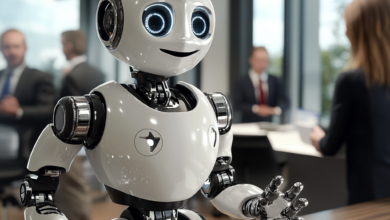
There’ve only been a few instances in our lifetime where a singular global event has rapidly impacted the lives of nearly everyone across the globe, while also radically reshaping personal and professional behaviours. The COVID-19 pandemic will go down in history as one of those events.
The Rate of Change is Accelerating
Like many other people, my wife and I’ve adjusted to turning our home into a work office. We’ve watched our eight-year-old daughter, Isabel, transform herself into a Zoom expert during remote schooling. We’ve also become a household extremely proficient in online ordering of everything from groceries to virtual doctors’ visits.
Recently, we sat down and discussed how much time we’ve saved avoiding work commutes, waiting in lines for doctors, and grocery check-outs. By reinvesting all this saved time in higher value ‘family time’ activities, we’ve developed into a stronger family. Businesses across all sectors are realising the same benefits. When we look at what enabled this shift, it’s clearly technology.
Automation and artificial intelligence (AI) have made the customer experience delightful in terms of the productivity and experience. The pandemic has ushered in a new era of digital experiences almost overnight – and the technology enabling this shift continues to pick up steam among businesses.
A ‘Digital Awakening’
Robotic Process Automation (RPA) arrived in the early 2000’s but didn’t enter the mainstream until 2014. Because of the ease of use, RPA became attractive to business analysts who could not code but who were computer savvy, could ‘drag and drop’ icons and were passionate about using technology to improve their work lives. They were eager to use automation to improve their business processes in the same way they used it to improve their personal lives.
As a result, these “citizen developers” rapidly adopted RPA to automate how they handled the volumes of data that had overwhelmed employees and slowed down business operations.
The COVID-19 health crisis in 2020 simply added fuel to an already burning need for and adoption of RPA. As the pandemic created a dislocated global workforce, there emerged an immediate need for employees to be productive in a remote environment where people, data and systems were more disconnected than ever before.
This created a ‘digital awakening’ among senior leaders for automation solutions rapidly collecting, merging, analysing and moving data. To fill this need and add business agility and resiliency, leaders turned to low-code digital workflow platforms with embedded RPA. In such environments, business users could operate as partners alongside their CIO professional developers to modernise business models.
What Does this Mean for Business Leaders Going Forward?
Organisations across all industries pride themselves on creating ‘moats’ around their business. Moats are the things leaders do particularly well – they differentiate organisations from competitors, allowing them to win.
Boards and CEOs are placing automation investment themes at the centre of many corporate strategies to digitally transform their business for greater speed. This approach is essential if they want to deliver enhanced personalised services and be more competitive.
Today’s business leaders understand decades of industry experience alone are no longer enough to win. To be successful today takes a willingness to balance traditional experience and futuristic innovation to create digital experiences delighting existing and new customers.
In my experience working with boards and CEOs, digital workflows using RPA have modernised companies. For instance, intelligent automation enables customers to submit and settle claims within minutes via mobile applications linked to legacy systems. In banking, digital onboarding of new customers is accomplished using automation, allowing bank systems to ingest personal data. At the same time, AI algorithms validate a customer’s identity. In logistics, intelligent automation enables real-time, detailed location tracking.
Outlook
When looking to the future, we’re left to ask if leaders are going to be bold and nimble enough to blend diverse perspectives and make risk-adjusted modernisation decisions to position to win? As the adoption of automation and AI continues to accelerate in 2021, more organisations will find themselves working like the digitally enabled companies of tomorrow.



